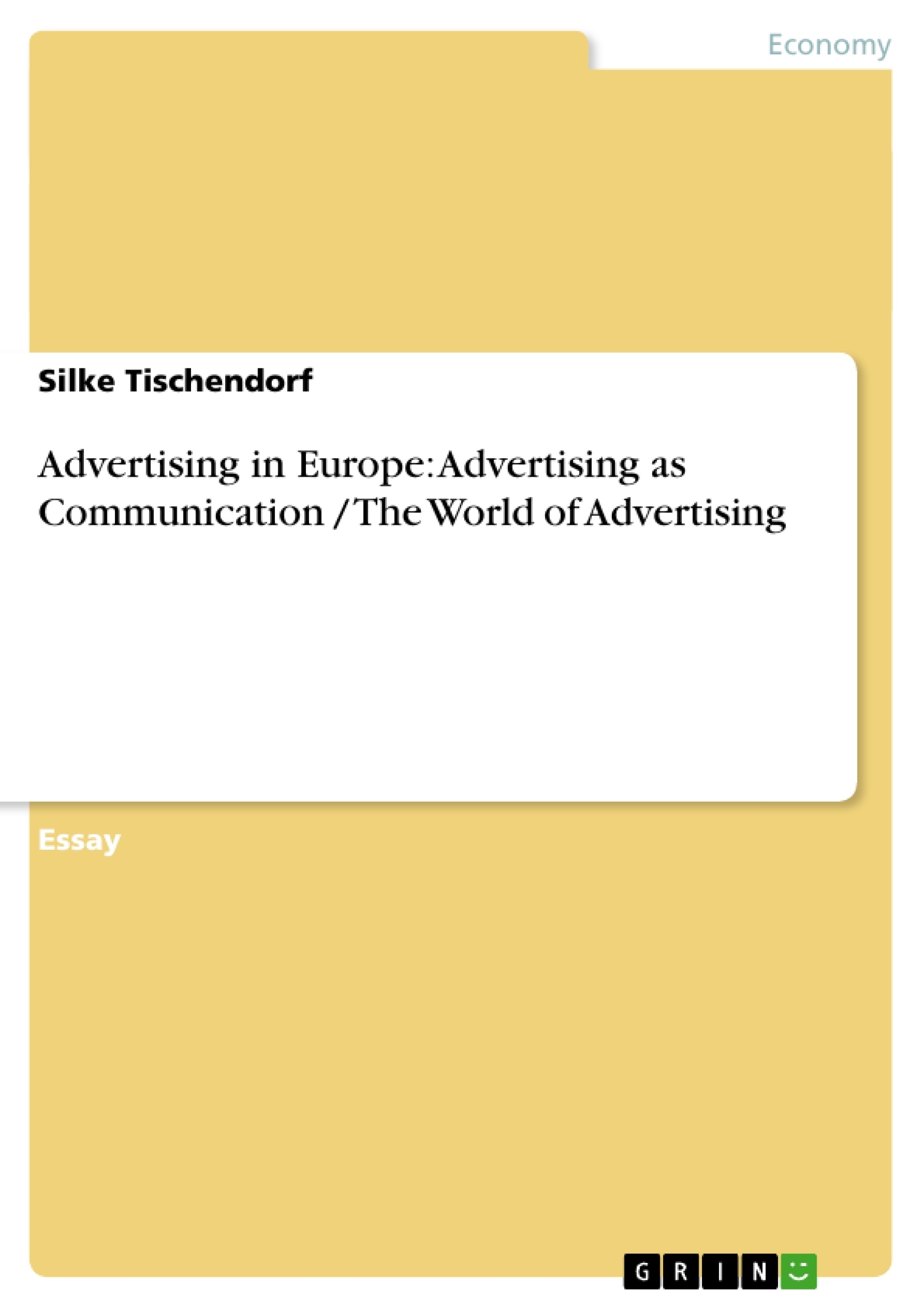For many years, beauty has been used as a marketing and advertising tool. In this essay I
would like to explore the meaning and use of beauty in advertising, what the aesthetic
function of advertising means and how it is related to the persuasive function and the
perlocutionary effect.
Advertising uses beauty as a communication tool to increase interest in a company’s
product or service through making it aspirational. The prevalence of attractive models in
advertising testifies to the general belief concerning their efficacy as a vehicle of
promotion. Attractive models might be effective in altering individual’s impressions of
products. Beauty can infer personal characteristics, abilities and motivations which can
support the promotion of various products.
The aesthetic criteria remain centrally relevant to many advertising decisions. Many
products have aesthetic components, most often by conscious design. In fact, countless
products are differentiated from others only on the basis of aesthetic criteria. This implies
that aesthetic elements form important dimensions for information processing and
attitude formation. Sometimes aesthetic motives may dominate, or even overwhelm
utilitarian motives, meaning that sometimes aesthetic attributes may be determining
factors in consumer choice.
Beauty in terms of advertising is defined by adjectives such as attractive, good-looking,
classy, sexy, elegant and pretty. Things are perceived to be beautiful depends on the
person you ask, because judgment of beauty is non-cognitive and is the pure feeling of
the observer (‘beauty lies in the eye of the beholder’). If somebody thinks that the product
or person in the ad has features that fit my sense of beauty then this could lead to the
perlocutionary effect. [...]
Section One – Advertising as Communication
Does beauty really persuade people to buy?
For many years, beauty has been used as a marketing and advertising tool. In this essay I would like to explore the meaning and use of beauty in advertising, what the aesthetic function of advertising means and how it is related to the persuasive function and the perlocutionary effect.
Advertising uses beauty as a communication tool to increase interest in a company’s product or service through making it aspirational. The prevalence of attractive models in advertising testifies to the general belief concerning their efficacy as a vehicle of promotion. Attractive models might be effective in altering individual’s impressions of products. Beauty can infer personal characteristics, abilities and motivations which can support the promotion of various products.
The aesthetic criteria remain centrally relevant to many advertising decisions. Many products have aesthetic components, most often by conscious design. In fact, countless products are differentiated from others only on the basis of aesthetic criteria. This implies that aesthetic elements form important dimensions for information processing and attitude formation. Sometimes aesthetic motives may dominate, or even overwhelm utilitarian motives, meaning that sometimes aesthetic attributes may be determining factors in consumer choice.
Beauty in terms of advertising is defined by adjectives such as attractive, good-looking, classy, sexy, elegant and pretty. Things are perceived to be beautiful depends on the person you ask, because judgment of beauty is non-cognitive and is the pure feeling of the observer (‘beauty lies in the eye of the beholder’). If somebody thinks that the product or person in the ad has features that fit my sense of beauty then this could lead to the perlocutionary effect.
The aesthetic function of advertising is strongly linked with the persuasive function, meaning that both functions aim to make people buy the advertised product or service through the support of beauty and aesthetical aspects in the advert. If the advert appeals to the ‘target’ then the perlocutionary effect will be that the viewer will buy the product or service of the advertisement. Therefore, it is essential for adverts to be both persuasive and aesthetic. Using beauty without substance or context could be a hindrance for a perlocutionary effect as the consumer sees no relation to the product or its benefits.
There is one major reason why beauty is so often used in advertising to make consumers buy the products: It is the cliché of ‘What is beautiful is good’. Advertisers assume that they can benefit from combining celebrity status and physical attractiveness. There is considerable evidence in social sciences and marketing that beauty sells and that beauty changes attitudes towards products, people and places. However, it does not always work that way and it is not sufficient to advertise just with beauty as a persuader.
Beauty is not the only factor in the decision to purchase. A consumer will make buying-decisions not only based on the beauty of a product or an ad, but also on the product’s function, price, packaging and the advantage for the consumer. Also important, are the attitude towards the brand, credibility of the advertisement and the purchase intention.
Especially in the consumer goods industry, advertisers use pretty celebrities in order to promote fashion, cosmetic or other goods. However, in terms of non-consumer goods (industrial machines, etc), beauty plays a weak role. In this business, buyers are fact and price oriented and the perlocutionary effect is triggered by rational details of an advertisement, whereas in the consumer goods industry successful advertising is based on emotional aspects. For example, a crane which was advertised by a beautiful model in a beautiful set up is not bought because of the perfect atmosphere and the nice looking girl, but on the function of the crane, the capabilities and technical features which are purely unemotional.
[...]
- Citation du texte
- Silke Tischendorf (Auteur), 2003, Advertising in Europe: Advertising as Communication / The World of Advertising, Munich, GRIN Verlag, https://www.grin.com/document/16373
-

-

-

-
Téléchargez vos propres textes! Gagnez de l'argent et un iPhone X. -

-
Téléchargez vos propres textes! Gagnez de l'argent et un iPhone X. -

-
Téléchargez vos propres textes! Gagnez de l'argent et un iPhone X. -

-
Téléchargez vos propres textes! Gagnez de l'argent et un iPhone X. -

-
Téléchargez vos propres textes! Gagnez de l'argent et un iPhone X.

